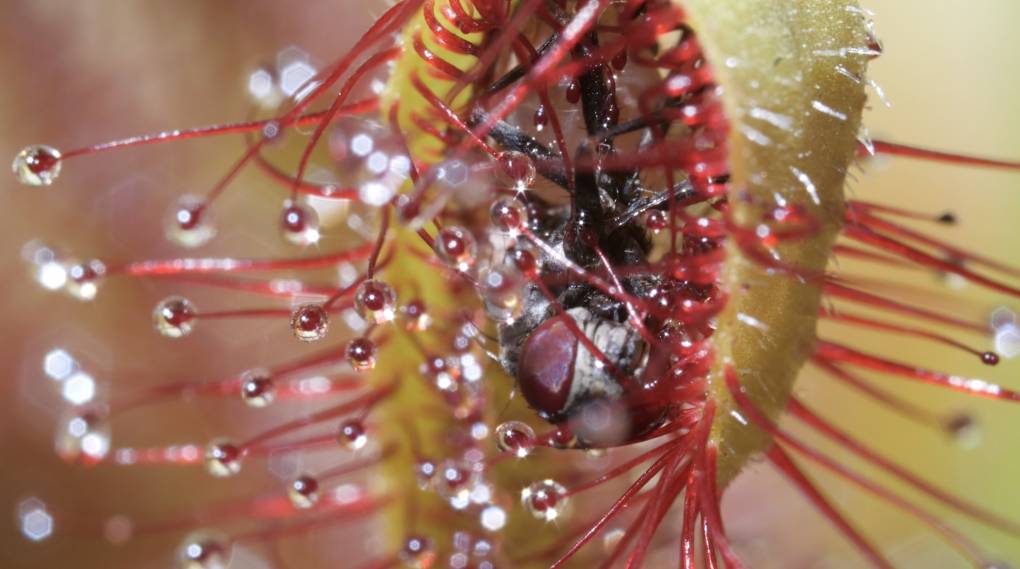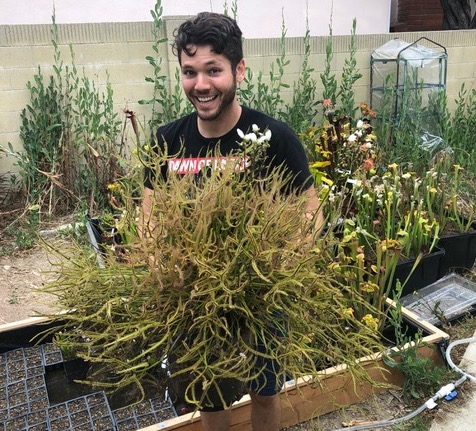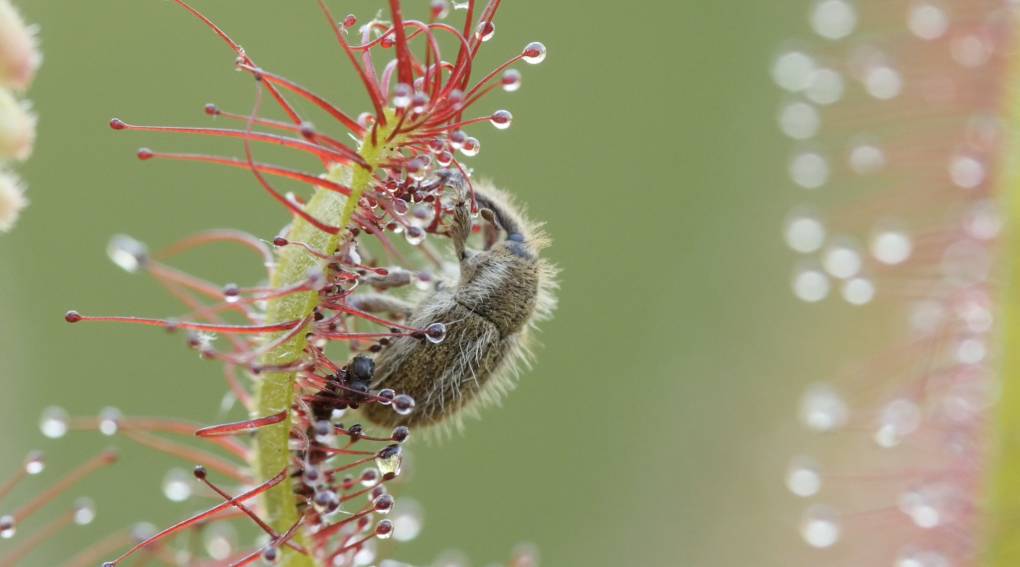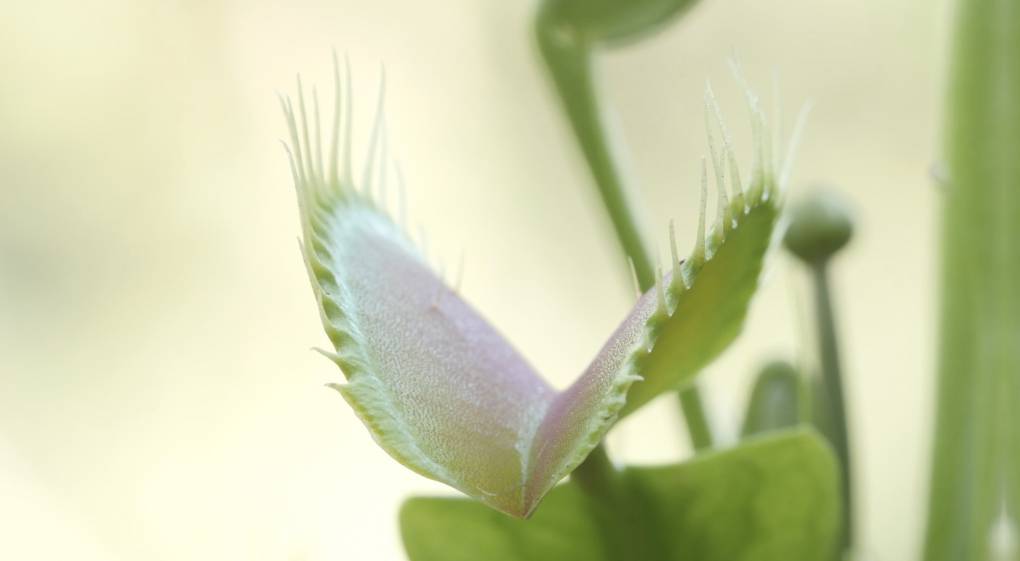Cape Sundews Trap Bugs In A Sticky Situation
If you have houseplants, most of the time there’s not a lot of visible activity. They just quietly add some outdoor beauty to your indoor surroundings.

But then there are carnivorous plants, like sundews. They aren’t content to just sit still. Typically found in habitats where other plants usually can’t thrive — like bogs with nutrient-poor soil — they often need to supplement their diet with nutrients like nitrogen and phosphorus. Carnivorous plants have developed a way to obtain these key nutrients from another source: insects. Specifically, by consuming them.
Growing carnivorous plants at home has become more popular over the years, and some species of sundews are easy to maintain for beginners, like the Cape sundew. Several years ago, 33-year-old David Fefferman realized there wasn’t a comprehensive clearinghouse of information for other passionate hobbyists like himself, so he launched Carnivorous Plants Resource.

The site is a thrill ride for lovers of carnivorous plants, with everything from growing tips for Venus flytraps to group events to a marketplace where people can sell the plants and other items, like carnivorous plant-related art.
“Without doubt, it’s the most feature-rich carnivorous plant website around,” Fefferman said. “We’re definitely the most thorough and up-to-date site for the hobby.”
Fefferman, an Orange County resident, has been enamored with these unique plants from a very young age.
“I picked up my first carnivorous plant in elementary school after a friend brought in a Venus flytrap as part of his science fair project,” he said. “I was already primed for plant-learning since my own project was focused on photosynthesis, and I just fell in love with his weird little insect-eating plant. I asked my mom to take me to a ‘plant store’ to find one for myself, and the passion grew from there.”
His parents helped nurture his growing interest when they took him to the The Huntington Library, Art Museum, and Botanical Gardens in Los Angeles County to see the Amorphophallus titanum — one of the world’s largest flowers, commonly known as the corpse flower — in bloom.

“The flower was incredible,” he said. “While at the gardens, I made a friend who had a huge collection of carnivores and really pushed me further into the hobby. Plants started showing up in the mail regularly, and my parents helped me pot them up and keep them happy.”
His appreciation for carnivorous plants hasn’t waned over the years.
“Even today, I’m just completely fascinated with their forms and trapping mechanisms,” he said. “They’re just so cool. I’ve also grown to love them as beautiful objects.”
When he’s not developing apps or building other websites for a living, Fefferman also maintains a huge personal collection of more than 10,000 plants, which he keeps indoors and outdoors.
Fortunately, even with all of these mouths to feed, all of his outdoor plants and greenhouse plants catch their own food.

“The novelty of flytraps snagging prey never wore off, so I love to watch them do their thing,” Fefferman said. “At this point, it’s more thrilling to watch them catch prey naturally rather than hand-feeding them. Indoor seedlings get “fed” carefully-applied fertilizer.”
While it used to be difficult for people to buy carnivorous plants, they’re now readily available online and at local nurseries. And the plants pretty much take care of themselves once you understand a few basic tips for caretaking.
“Unfortunately, there still seems to be this perception that the plants are difficult to care for, and that turns people away from getting started with the hobby,” he said. “Fear of killing a plant becomes the biggest challenge or hurdle for beginners, and it shouldn’t be. There are plenty of growing instructions and resources out there to help.”